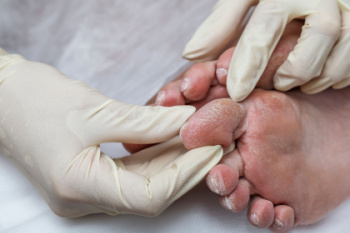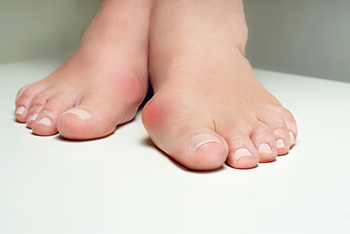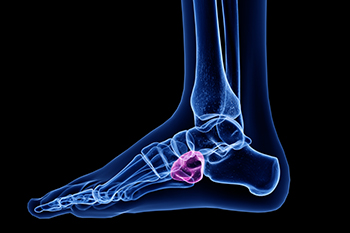Items filtered by date: February 2025
Tips for Diabetic Foot Care

Maintaining good foot health is essential for people with diabetes to prevent complications like infections or ulcers. High blood sugar can cause nerve damage and poor circulation, making it harder to detect injuries or infections. Regularly check your feet for cuts, blisters, redness, or swelling. If you notice any changes, seek treatment immediately. Wearing the right shoes is key. Opt for well-fitting shoes that provide support and avoid tight or high-heeled footwear. Soft, moisture-wicking socks help protect your feet from friction and reduce the risk of blisters. Keep your toenails trimmed and filed to prevent ingrown toenails and avoid cutting them too short, which can lead to injury. If you experience numbness, tingling, or pain in your feet, it is important to consult a podiatrist. They can help with routine foot exams, treatment for any existing issues, and advice on proper footwear or orthotics. For optimal foot care, it is suggested that you schedule an appointment with a podiatrist to keep your feet healthy and pain-free.
Diabetic foot care is important in preventing foot ailments such as ulcers. If you are suffering from diabetes or have any other concerns about your feet, contact Brock Liden, DPM from Ohio. Our doctor can provide the care you need to keep you pain-free and on your feet.
Diabetic Foot Care
Diabetes affects millions of people every year. The condition can damage blood vessels in many parts of the body, especially the feet. Because of this, taking care of your feet is essential if you have diabetes, and having a podiatrist help monitor your foot health is highly recommended.
The Importance of Caring for Your Feet
- Routinely inspect your feet for bruises or sores.
- Wear socks that fit your feet comfortably.
- Wear comfortable shoes that provide adequate support.
Patients with diabetes should have their doctor monitor their blood levels, as blood sugar levels play such a huge role in diabetic care. Monitoring these levels on a regular basis is highly advised.
It is always best to inform your healthcare professional of any concerns you may have regarding your feet, especially for diabetic patients. Early treatment and routine foot examinations are keys to maintaining proper health, especially because severe complications can arise if proper treatment is not applied.
If you have any questions please feel free to contact our office located in Circleville, OH . We offer the newest diagnostic and treatment technologies for all your foot and ankle needs.
Types and Causes of Bunions

Bunions are bony protrusions that form at the base of the big toe, often causing discomfort or pain. There are various types of bunions, each varying in severity. The mild form typically causes slight swelling and can often be managed with proper footwear or orthotics. In moderate cases, the deformity becomes more noticeable, leading to increased discomfort and difficulty with movement. Severe bunions can cause significant pain, misalignment of the toes, and even difficulty walking, requiring more intensive treatments or surgery. The main causes of bunions include genetic factors, abnormal foot mechanics, and wearing ill-fitting shoes. Conditions like arthritis can also contribute to their development. A bunionette is a smaller, similar deformity that forms on the outside of the foot, near the little toe. While bunions can be painful, early intervention and proper care from a podiatrist can prevent further complications and help manage symptoms effectively. If you notice the beginning signs of a bunion, it is suggested that you consult this type of doctor who can offer effective prevention and relief tips.
If you are suffering from bunion pain, contact Brock Liden, DPM of Ohio. Our doctor can provide the care you need to keep you pain-free and on your feet.
What Is a Bunion?
Bunions are painful bony bumps that usually develop on the inside of the foot at the joint of the big toe. As the deformity increases over time, it may become painful to walk and wear shoes. Women are more likely to exacerbate existing bunions since they often wear tight, narrow shoes that shift their toes together. Bunion pain can be relieved by wearing wider shoes with enough room for the toes.
Causes
- Genetics – some people inherit feet that are more prone to bunion development
- Inflammatory Conditions - rheumatoid arthritis and polio may cause bunion development
Symptoms
- Redness and inflammation
- Pain and tenderness
- Callus or corns on the bump
- Restricted motion in the big toe
In order to diagnose your bunion, your podiatrist may ask about your medical history, symptoms, and general health. Your doctor might also order an x-ray to take a closer look at your feet. Nonsurgical treatment options include orthotics, padding, icing, changes in footwear, and medication. If nonsurgical treatments don’t alleviate your bunion pain, surgery may be necessary.
If you have any questions, please feel free to contact our office located in Circleville, OH . We offer the newest diagnostic and treatment technologies for all your foot care needs.
Heel Pain in the Morning?
Causes of Cuboid Syndrome

Cuboid syndrome is a foot condition that involves the misalignment or dysfunction of the cuboid bone, which is located on the outer side of the midfoot. This misalignment can lead to pain and discomfort, particularly when walking or running. The causes of cuboid syndrome are varied and often linked to midtarsal instability, where the bones in the midfoot lose their normal alignment. Excessive body weight can also contribute, as it puts added pressure on the foot and increases the risk of injury. Poor footwear, such as shoes that do not provide adequate support, can worsen the condition by failing to properly stabilize the foot. Training on uneven surfaces or engaging in high-impact activities without proper foot care can further increase the risk of cuboid dysfunction. Additionally, a previous foot or ankle sprain may leave the foot vulnerable to developing cuboid syndrome, making proper recovery and prevention measures essential for foot health. If you have pain in this part of your foot, it is suggested that you contact a podiatrist who can provide a proper diagnosis and treatment.
Cuboid syndrome, also known as cuboid subluxation, occurs when the joints and ligaments near the cuboid bone in the foot become torn. If you have cuboid syndrome, consult with Brock Liden, DPM from Ohio. Our doctor will assess your condition and provide you with quality foot and ankle treatment.
Cuboid syndrome is a common cause of lateral foot pain, which is pain on the outside of the foot. The condition may happen suddenly due to an ankle sprain, or it may develop slowly overtime from repetitive tension through the bone and surrounding structures.
Causes
The most common causes of cuboid syndrome include:
- Injury – The most common cause of this ailment is an ankle sprain.
- Repetitive Strain – Tension placed through the peroneus longus muscle from repetitive activities such as jumping and running may cause excessive traction on the bone causing it to sublux.
- Altered Foot Biomechanics – Most people suffering from cuboid subluxation have flat feet.
Symptoms
A common symptom of cuboid syndrome is pain along the outside of the foot which can be felt in the ankle and toes. This pain may create walking difficulties and may cause those with the condition to walk with a limp.
Diagnosis
Diagnosis of cuboid syndrome is often difficult, and it is often misdiagnosed. X-rays, MRIs and CT scans often fail to properly show the cuboid subluxation. Although there isn’t a specific test used to diagnose cuboid syndrome, your podiatrist will usually check if pain is felt while pressing firmly on the cuboid bone of your foot.
Treatment
Just as the range of causes varies widely, so do treatments. Some more common treatments are ice therapy, rest, exercise, taping, and orthotics.
If you have any questions, please feel free to contact our office located in Circleville, OH . We offer the newest diagnostic and treatment technologies for all your foot care needs.
Types of Surgery for Achilles Tendon Ruptures

An Achilles tendon rupture is a serious injury that severely affects mobility. Treatment options include surgical repair or immobilization. Achilles tendon surgery reattaches the torn ends of the tendon and can be performed as an open procedure, which involves a larger incision, or as a percutaneous procedure. Percutaneous procedures use small punctures in the skin to insert tools for repairing the tendon, offering a less invasive approach that may result in reduced scarring and faster recovery. Surgery is often recommended for younger or more active patients because it lowers the risk of another rupture. Immobilization uses devices like casts, splints, or walking boots to keep the lower leg and ankle stationary while the tendon heals naturally. This method is commonly chosen for older or less active patients due to fewer associated risks. A podiatrist can assess your Achilles tendon injury and determine the best treatment based on the extent of the rupture and your activity level. If you have torn your Achilles tendon, it is suggested that you schedule an appointment with a podiatrist for an exam and suggested treatment options.
Achilles tendon injuries need immediate attention to avoid future complications. If you have any concerns, contact Brock Liden, DPM of Ohio. Our doctor can provide the care you need to keep you pain-free and on your feet.
What Is the Achilles Tendon?
The Achilles tendon is a tendon that connects the lower leg muscles and calf to the heel of the foot. It is the strongest tendon in the human body and is essential for making movement possible. Because this tendon is such an integral part of the body, any injuries to it can create immense difficulties and should immediately be presented to a doctor.
What Are the Symptoms of an Achilles Tendon Injury?
There are various types of injuries that can affect the Achilles tendon. The two most common injuries are Achilles tendinitis and ruptures of the tendon.
Achilles Tendinitis Symptoms
- Inflammation
- Dull to severe pain
- Increased blood flow to the tendon
- Thickening of the tendon
Rupture Symptoms
- Extreme pain and swelling in the foot
- Total immobility
Treatment and Prevention
Achilles tendon injuries are diagnosed by a thorough physical evaluation, which can include an MRI. Treatment involves rest, physical therapy, and in some cases, surgery. However, various preventative measures can be taken to avoid these injuries, such as:
- Thorough stretching of the tendon before and after exercise
- Strengthening exercises like calf raises, squats, leg curls, leg extensions, leg raises, lunges, and leg presses
If you have any questions please feel free to contact our office located in Circleville, OH . We offer the newest diagnostic tools and technology to treat your foot and ankle needs.

